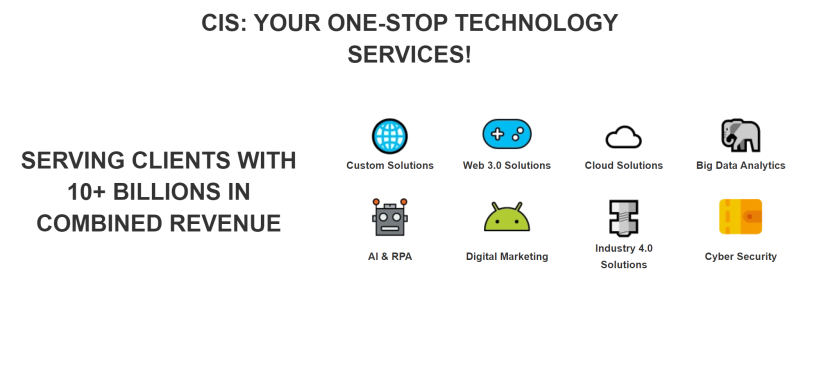Maximizing ROI: The Cost and Benefits of Adopting Slack for Your Business
- Slack - Detailed Analysis by Enterprise Solutions Experts



Why Mid-size Companies and Enterprises needs Slack:
Mid-size companies and enterprises need Slack because it provides an efficient way to communicate with team members, manage projects, and collaborate on tasks. Slack offers a secure platform for businesses of any size to organize their conversations into channels and quickly search through past messages. It also allows users to easily share files and documents, as well as set up notifications for when certain events occur. With these features, mid-size companies can save time by streamlining communication between teams and departments while staying organized. Additionally, Slack's enterprise plan includes advanced security measures such as two-factor authentication that help keep sensitive data safe from malicious actors.
Benefits of using Slack in Mid-size companies and Enterprises:
1. Improved Communication:
Slack provides an easy and intuitive way to communicate with colleagues, both in group settings or one-on-one conversations. This makes it easier for teams to stay connected and collaborate on projects more efficiently.
2. Centralized Information Hub:
With its powerful search feature, Slack allows users to quickly find relevant information from anywhere within the platform, making it a great tool for storing important documents and files that can be accessed at any time by anyone who needs them.
3. Increased Productivity:
By providing an efficient communication system, Slack helps reduce the amount of time spent searching for information or waiting for responses from other team members. This improved workflow leads to greater productivity as tasks can be completed faster and more effectively than before.
4. Easier File Sharing:
Sending large attachments through email is often difficult due to size restrictions but with Slack's file sharing capabilities this isn't a problem anymore as users can easily upload files up to 1GB in size directly into their workspace channels or private messages without having to worry about reaching storage limits like they would with email services such as Gmail or Outlook 365 .Detailed Features of Slack for Mid-size companies and Enterprises:
1. Unlimited messaging and search:
Slack allows users to send unlimited messages, share files, and search through their entire conversation history. This makes it easy for mid-size companies and enterprises to stay in touch with their teams no matter where they are located.
2. Customizable channels:
Companies can create different channels for different topics or projects so that conversations remain organized and on track. This feature is particularly helpful for larger organizations who need a way to keep everyone connected without getting overwhelmed by too many notifications from one large chat room.
3. Integrations with other tools:
Slack integrates with hundreds of popular business apps like Dropbox, Google Drive, Salesforce, Trello, Asana, Jira and more - allowing users to quickly access the information they need without having to switch between multiple programs or tabs..
4. Automation features:
Automated workflows can be set up using bots or "Slackbots" which allow you to automate repetitive tasks such as scheduling meetings or sending reminders about upcoming deadlines. These features make it easier for managers at mid-sized companies and enterprises to streamline processes while still staying connected with team members around the world in real time.
5 Security & Compliance Features:
Slack offers several security measures including two factor authentication (2FA), single sign-on (SSO) integration options , data encryption in transit/at rest , audit logs , customizable retention policies , user management controls . All these help ensure compliance requirements are met while keeping your company's data secure .Who are the Users of Slack:
Slack is used by many different types of customers, including businesses, organizations, and individuals. Customers range from small startups to large enterprises with hundreds of thousands of users. Popular industries that use Slack include technology, finance, healthcare, education, media & entertainment, government & public sector organizations.
How to ensure Data Security and Compliance with Slack:
1. Use Two-Factor Authentication:
Slack offers two-factor authentication for all users, which is an essential security measure to protect your data from unauthorized access.
2. Utilize Access Control Lists (ACLs):
ACLs allow you to control who can access specific areas of your workspace and what actions they can take within it. This helps ensure that only authorized personnel have access to sensitive information or channels in the workspace.
3. Restrict File Sharing:
You can restrict file sharing by setting up certain parameters such as limiting the types of files allowed, restricting downloads and uploads, or disabling guest accounts from accessing shared files altogether.
4. Enable Data Loss Prevention (DLP):
Slack's DLP feature allows you to set up rules that automatically detect potential violations of compliance regulations and alert administrators when a violation occurs so they can take action accordingly.
5. Monitor User Activity:
Regularly monitoring user activity on Slack will help you identify any suspicious behavior quickly before it becomes a problem and put measures in place to prevent further incidents in the futureHow Slack can increase organization Productivity, Agility, and Profitability:
1. Increase Collaboration:
Slack allows teams to instantly communicate and collaborate with each other, improving efficiency and productivity. Team members can quickly share ideas, documents, feedback, and updates in real-time without having to wait for an email response or a meeting. This makes it easier for team members to stay informed about what's going on in the organization and make decisions faster.
2. Streamline Communication:
Slack simplifies communication by allowing users to send messages directly from their desktop or mobile devices instead of relying on traditional methods such as emails or phone calls which are often slow and inefficient. This helps reduce miscommunication between team members while also eliminating unnecessary back-and-forth conversations that would otherwise take up valuable time.
3. Improve Efficiency:
With Slack's powerful search feature, users can find information quickly without having to sift through multiple emails or chat rooms looking for the right answer they need at any given moment. Additionally, its user friendly interface allows new employees to get up-to-speed quickly so they can start contributing sooner rather than later - thus increasing overall organizational efficiency levels significantly over time .
4 Enhance Productivity Levels:
By enabling teams to work together more effectively via group messaging channels, tasks can be completed quicker since everyone is able track progress easily in one place - this helps keep projects moving forward much faster than before when using traditional methods of communication alone..
5 Boost Profitability:
With increased collaboration among team members due better communication tools provided by Slack , organizations have seen improved customer service levels leading higher customer satisfaction rates; resulting in increased profits over timeHow to Measure KPIs and increase Benefits of implementing Slack in Mid-size companies and Enterprises:
1. Measure the number of users:
Tracking the number of active users is a great way to measure the success of Slack in mid-size companies and enterprises. This will help you understand how many people are actually using it and if its usage is growing over time.
2. Monitor message volume:
Monitoring the total number of messages sent on Slack can also be useful for understanding how much engagement there is with your platform. It's important to keep an eye on this metric as it can give you insights into which teams or departments are using Slack most frequently, as well as any areas where engagement may be waning over time.
3. Track user satisfaction:
User satisfaction surveys can provide valuable feedback from employees about their experience with Slack and whether they think it's helping them do their jobs better or faster than before implementation. Surveys should include questions about ease-of-use, helpfulness, effectiveness, etc., so that you get a comprehensive view into what works and what needs improvement when it comes to your company's use of Slack.
4. Calculate cost savings:
Implementing new technology like Slack often comes with associated costs, such as licenses fees or hardware purchases needed to run the software properly - but those costs could potentially lead to significant long-term savings in other areas (e..g lower travel expenses due to more efficient remote communication). Keep track of these cost savings by tracking changes in related expenses before and after implementing Slack - this will help you assess whether or not investing in new technology was worth it for your business overall!How Slack can increase Employee Morale in your organization:
Slack can increase organization employee morale by providing a platform for employees to communicate and collaborate with each other easily. It can create an environment of transparency, where everyone is up-to-date on company initiatives and goals, as well as any changes or updates that may occur. Slack also offers features such as video chat, which allows employees to connect face-to-face in a virtual setting. Additionally, it provides channels specifically designed for casual conversation between colleagues-allowing them to get to know each other better outside of the office environment. Finally, Slack's integration with third party applications like Trello and Asana allow teams to track progress on projects more efficiently and effectively-helping boost productivity and morale within the workplace.
How Slack is Better than its Competitors:
Slack is better than its competitors in several ways. Firstly, Slack offers a range of features that other messaging apps don't have, such as threaded conversations, file sharing and integration with third-party services. Secondly, it has a great user interface which makes collaboration easy and intuitive for users. Finally, the platform provides powerful search capabilities to quickly find the information you need.
Cost to Develop & Implemention of Slack:
The cost to develop and deploy Slack depends on the features, customizations, and integrations you are looking for. Generally speaking, it can range anywhere from $5,000-$50,000 depending on your needs.
Why outsourcing implementation services for Slack is better for Mid-size companies and Enterprises:
Outsourcing implementation services for Slack is a great option for mid-size companies and enterprises because it can help them save time, money, and resources. By outsourcing the setup of the platform, companies can have an expert team handle all aspects of implementation from onboarding users to configuring security settings. This allows businesses to focus their energy on other areas such as product development and customer service. Additionally, outsourced teams are often more knowledgeable about specific platforms such as Slack than internal staff members who may not be familiar with its features or how best to use them. Finally, having an experienced team in charge of setup ensures that any issues encountered during the process will be quickly resolved without impacting operations or productivity.


